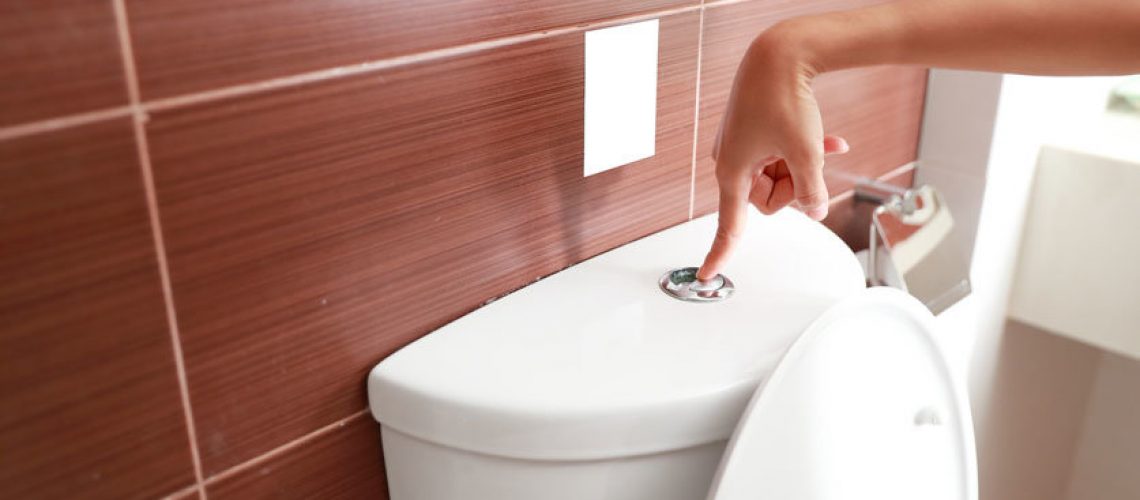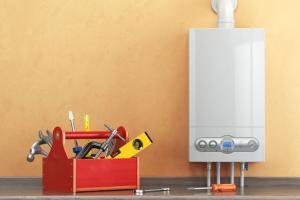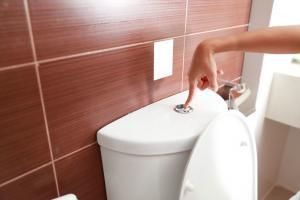There are some jobs that need doing around the house that you can’t put off until tomorrow.
A broken toilet is a prime example!
And for obvious reasons.
But don’t worry, if your toilet won’t flush the content in this article will help you diagnose the problem and explain how to fix it.
We’re going to assume you’ve already checked the cistern has filled with water. If you haven’t, do that first. The water level should be at least one inch below the overflow pipe for your toilet to perform a good flush.
If there is a sufficient amount of water in the cistern, the problem will be caused by one of the following:
Excessive Debris
Old toilets collect a build-up of limescale, calcium, rust and rim feed which block the flow of water and weaken the flush. Eventually, the toilet will stop flushing altogether. The simple solution is to give the rim and jet holes a thorough clean.
- Turn off the water supply
- Hold the flapper open and drain off the as much water as possible
- Pour 1-2 cups of limescale cleaning solution down the valve opening. If any cleaning solution spills into the tank, wipe it clean immediately
- Let the toilet sit unused for several hours
- Once you have given the cleaning solution enough time to dissolve the build-up of minerals, feed a wire (coat hangar thick) through the rim feed under the lip of the toilet seat and scrape away the debris
- Do the same with the jet passageway
- Turn the water supply back on and flush the toilet several times to clear any remaining debris and leftover limescale fluid
Faulty Flush Lever
Another common problem with old toilets is the flush mechanism comes loose or breaks altogether. If you can wiggle the flush lever around or if there is no leverage when you press the handle down, this may be the reason why your toilet is not flushing properly.
The flush lever is connected to the syphon by a small chain with a hook. On occasion the to links become disconnected. If there is no resistance when you push down on the flush lever, hooking the chain back to the syphon will resolve the issue. You will see a small hole in the plastic where the hook slots into.
If the flush lever and the syphon are connected but the toilet is still not flushing, you will probably need to replace the syphon.
Broken Syphon
The most common cause of a non-flushing toilet is a broken syphon – the plastic mechanism in the centre of the cistern. If the toilet is part flushing there is probably a puncture in the diaphragm which is preventing the water from raising the water into the syphon.
If this is the case, you will need to replace the syphon – which is actually much easier than it sounds. Follow these instructions:
- Drain water out of the cistern. If you still have some flush, press down the lever and then ladle out the remaining water into a washing up bowl or bucket. Use a sponge to soak up the remaining drops of water at the bottom
- Unscrew the large plastic nut under the system. This will loosen the water pipe. Some water will drop out so have a cup ready to catch the spillage
- Remove the wing nuts from underneath the toilet to remove the cistern from the pan. If you cannot loosen the wing nuts, you will need to saw them off with a hacksaw or angle grinder
- Remove the fittings that hold the cistern to the wall and remove the cistern from the pan
- Remove the C link that connects the syphon to the flush lever and the rubber donut washer that connects the syphon with the cistern
- Next, you will need to buy a new syphon together with a sealing kit so you can refit the cistern back on the toilet pan.
- With your new syphon, take the rubber sealing washer and thread it over the threads of the syphon
- Screw the syphon into the bottom of the cistern and attach the bolt holding plate underneath. Tighten the nut using water pump pliers.
- Place the new donut washer over the syphon pipe and hold it in place with the two bolt slots.
- Place the cistern back on the pan
- Tighten the wing nuts and fasten the cistern back to the wall
- Connect the overflow pipe
- Flush the toilet several times to ensure there are no leaks
If you’re unsure what to do or still having problems flushing your toilet, give us a call and we’ll be straight round to help you out.






